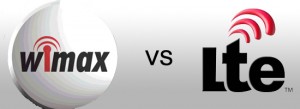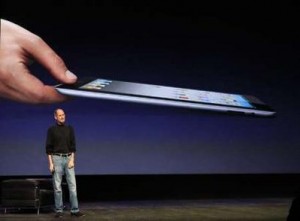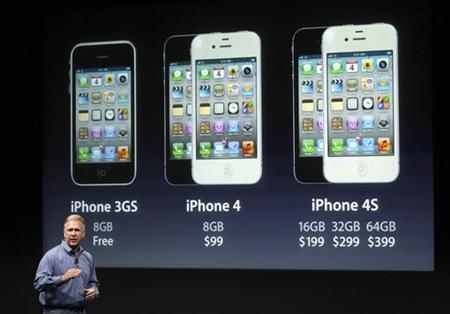Part of being a smart consumer is understanding how technology works, why we use it the way we do, and what that barrage of acronyms and PR jargon means. We’re here to help you make sense of it all, and to give you a better appreciation of how those transistors, pixels, and antennae come together to deliver the conveniences of the modern world to you.
If you thought our guide to 3G tech was confusing, the 4G scene is about as convoluted as ‘Jersey Shore’ sleeping arrangements. As was the case with 3G, there are different technologies competing to become king of the mobile data heap. But there is a more troublesome question that makes the whole thing problematic: what exactly is 4G? As it turns out, the answer isn’t the clear-cut, faster-than-3G solution mobile providers hope you believe.
What is 4G?
If you ask the International Telecommunication Union, the agency that develops and regulates telecommunications standards, mobile technology described as 4G must be capable of at least 100Mbit-per-second downloads. If you ask the wireless carriers, however, 4G is simply what comes after 3G; that extra ‘G’ does represent a speed bump, but not one even approaching the magnitude of what the ITU standards suggest. In fact, what some cellular companies are calling 4G are simply beefed-up 3G networks. At the moment, three different technologies are being labeled as 4G by the big players: WiMax (Sprint), LTE (Verizon and AT&T) and HSPA+ (T-Mobile and AT&T).
Ugh! Okay, so what exactly does the ITU consider 4G?
The two technologies that are expected to meet the requirements for 4G are LTE Advanced and WiMAX 2, neither of which are actually up and running anywhere outside of a lab. These, as indicated by their names, are evolutions of technological systems that are currently on market (specifically LTE and WiMAX). These networks, being rolled out by Verizon and Sprint (and eventually AT&T), are considered pre-4G technologies, and are unofficially referred to as 3.9G. They’re laying the groundwork for the jump to true 4G (which we’re sure carriers will be calling 8G, by then).
Enough with the technicalities, tell me about what the carriers are calling 4G.
This is where things get really messy, so let’s break it down by carrier:
Sprint : Sprint is banking on WiMAX, a technology that has been suggested not only as a mobile solution, but as a “last mile” wireless replacement for cable and DSL. Sprint was the first to the U.S. market with a so-called 4G service, but it still only has three phones that can connect to it (despite having launched its first 4G device ten months ago). In total, Sprint has covered 70 markets, including most major metropolitan areas, with WiMax. It attains between 3 and 6 Mbps download speeds on average, and tops out at 10 Mbps; uploads can reach a paltry 1 Mbps, enough for sending a few camera-phone snapshots, and those video calls you keep placing with your Evo’s front-facing camera really push the limits of the connection. At the end of the day, Sprint’s 4G network isn’t all that much faster than AT&T’s 3G network, and is only a nominal upgrade over its own EV-DO Rev.A 3G network. However, WiMax does have room to grow, and, thanks to a partnership with Clearwire, Sprint has some help building out its 4G network.
Verizon : Verizon is in the early stages of rolling out its new 4G LTE network. Despite the fact that there are no phones available for Verizon LTE (although there will be soon), the network has already launched in nearly 40 cities. By the end of 2011, that number should more than quadruple. Because LTE enjoys broader support than WiMAX, the Verizon rollout should move quickly, and exciting devices for the carrier will begin to pop up. (We’re looking at you, Droid Bionic.) In addition to enjoying broader support, which should make more Verizon phones capable of global roaming, Verizon’s LTE network is also significantly faster than Sprint’s WiMAX. Real-world speeds should range from 5 to 12 Mbps for downloads, and 2 to 5 Mbps for uploads. And that’s just the beginning; LTE is theoretically capable of downloads up to 300 Mbps, while WiMAX will top out at 72 Mbps. There is no guarantee, however, that Verizon will ever get anywhere near that limit. The company never reached the maximum potential of its EV-DO network as the result of skipping out on Rev.B (as did Sprint), and real-world speeds will always fall far short. So, while 300 Mbps is possible, you’ll probably have to wait for LTE Advanced to see such speeds.
T-Mobile : The folks at T-Mob have caught some flack for deciding to refer to its HSPA+ network as “4G” — and with good reason. While T-Mobile’s network is often the fastest in terms of real-world speeds (compared to AT&T and Verizon’s 3G networks and Sprint’s 4G), the company is bumping up against the technical limitations of HSPA+. T-Mobile is currently capable of hitting speeds up to 21 Mbps and below, and an upgrade announced at CES will push that to 42 Mbps. Real-world speeds will be significantly lower, but, even if it reaches half of its rated max (around 20 Mbps), the network will still far outstrip Sprint and Verizon. With nearly 80 over 100 markets (Update: A T-Mobile rep contacted us to correct our market coverage numbers which were out of date) covered by its current 21-Mbps network, T-Mobile also has the largest “4G” coverage area. Unfortunately, the company doesn’t have a clear upgrade path to true 4G. While it does continue to hack and tweak its HSPA+ network for speeds up to 168 Mbps, neither LTE or WiMax figure into its short-term plans.
AT&T : The former exclusive home of the iPhone is also home to the most confusing 4G network. The company doesn’t plan to start rolling out LTE until later in the year. It doesn’t want to be the sole carrier without a 4G network, though, so it’s decided to throw the switch on its HSPA+ network, which should cover the entirety of the company’s current 3G footprint. When it officially launches, AT&T’s “4G” network will dwarf that of its competitors. So what happens when its LTE launches in the middle of the year? Well… that’ll be 4G too! What speeds we should expect when AT&T’s 4G networks launch are anyone’s guess, though the company’s own testing puts HSPA+ at around 6 Mbps, which isn’t terribly impressive. We do know, however, that AT&T will have a ton of compelling hardware to pair with the service — like the Atrix 4G, which is so powerful it’s almost unfair to compare it to other phones.
My head hurts… Is 4G even worth it?
Short answer: yes. Even if you don’t have 4G in your city now, if you purchase a 4G-capable phone, you’ll be able to take care of the speed bump. Additionally, you’ll be future-proofing your device. It’s safe to assume that carriers won’t be investing much in improving their 3G networks from here on out, and that the future lies with 4G. Besides, practically every 4G phone on the market works with current 3G networks, so you won’t be sacrificing anything (except perhaps some battery life) by opting for 4G.
4G is a mess of epic proportions, but one that should not be avoided. In fact, if you’ve got an upgrade pending, but your carrier has not yet launched its 4G network, it’s worth waiting. If you pick up a 3G phone from AT&T or Verizon today, it’ll just be obsolete in a month.
Author : Terrence O’Brien






































